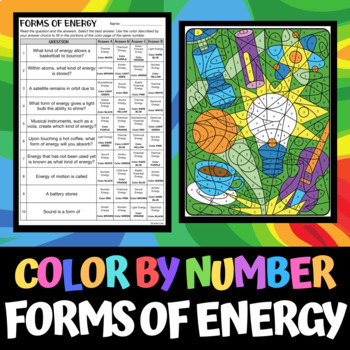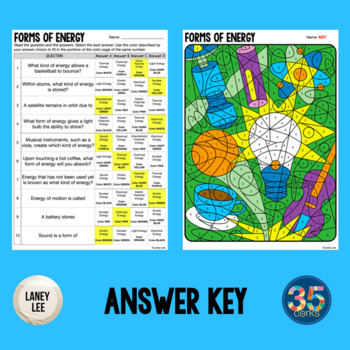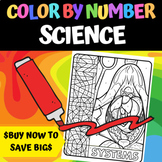Forms of Energy - Color by Number
- PDF
What educators are saying
Also included in
- Is lesson planning just too much on top of teaching on top of grading on top of classroom management on top of *ahem* living your life? Get all the resources you need to teach energy either in person, hybrid, or virtual with this great value-for-money bundle! These resources will save you time, enPrice $42.00Original Price $60.00Save $18.00
- Do your students need practice for standardized tests? Do you need a way for students to review content while also checking for accuracy? If you answered yes to any of those questions then this resource is for you. I created this line of color by number resources to help teachers, parents, and stuPrice $25.00Original Price $35.50Save $10.50
- Is lesson planning just too much on top of teaching on top of grading on top of classroom management on top of *ahem* living your life? Get all the guidance you need to teach a full-year physical science course in person, hybrid, or virtual with my all-inclusive curriculum bundle! This curriculum wPrice $268.00Original Price $383.99Save $115.99
Description
Do your students need practice for standardized tests? Do you need a way for students to review content while also checking for accuracy? If you answered yes to any of those questions then this resource is for you.
I created this line of color by number resources to help teachers, parents, and students by providing simple yet comprehensive practice on a variety of topics. The questions are designed to be rigorous and require students to predict, reflect, connect, and think critically about the content being presented.
The concept of this resource is simple: each answer choice has a color. At the end of the worksheet, students will color a design by matching the question numbers with the answer colors. If the picture doesn't make "sense," students know that there must be an error in their work.
Let's get our students thinking, reading, and reviewing vocabulary with this color by number practice. Your purchase includes a PDF download that is perfect for pre-reading, homework and review, or even sending to absent students.
Topics covered in this resource include:
- Kinetic and Potential Energy
- Sound Energy
- Light Energy
- Gravitational Energy
- Thermal Energy
- Nuclear Energy
- Chemical Energy
- Elastic Energy
Who is this resource for?
This resource can be used by classroom teachers, tutors, and parents of students in grades 6-9. It provides a variety of practice covering the mentioned topics.
How Can I Use this Resource?
- Emergency Sub Plans
- An independent work station in a set of stations
- Differentiation – Assign this coloring as reteaching for students who have yet to show mastery.
- Homework
- Creation of Independent Work Packet for students who are not able to be present for direct instruction.
- Extension activity for early finishers or for students who show a special interest in the topic
- Use as a square on a Choice Board
- Formative or Summative assessment
- Interactive Notebooks: Print 2 pages in one and cut apart. Glue mini pages into notebooks with room for annotations on the side
- Interactive Notebooks: Print entire PDF as a mini booklet and add to notebooks using thesesimple instructions.
What's Included?
Purchase includes a printable PDF file in color with answer key. Please take a look at the preview file to see more of this resource.
More questions?
Email me at laneyleeteaches@gmail.com
-------------------------------------------------------------------------------------------------------------------------------
MORE COLOR BY NUMBER RESOURCES or purchase theBUNDLE.</a>
-------------------------------------------------------------------------------------------------------------------------------
More on energy:
- Forms of Energy Presentation
- Kinetic vs. Potential Energy Online Lab
- Forms and Transformations Quiz
- Transformations Presentation
- Homework Pages
- Energy One Pager
- ENERGY ACTIVITY BUNDLE (SAVE 30%)
-------------------------------------------------------------------------------------------------------------------------------
MORE COLOR BY NUMBER RESOURCES or purchase the GROWING BUNDLE.
-------------------------------------------------------------------------------------------------------------------------------
To stay updated on sales and new products, please follow my store:
Connect and chat with me!







